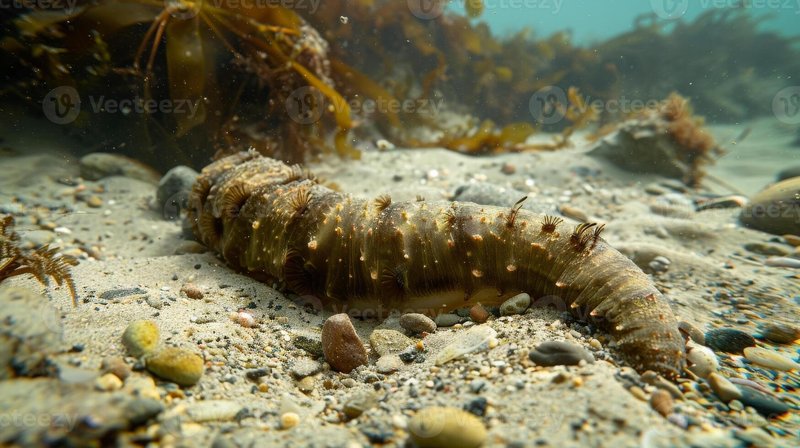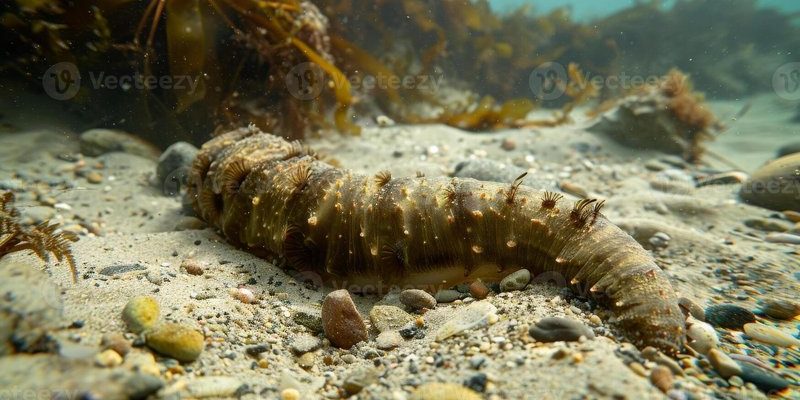
So, what exactly do sea cucumbers do? Well, they’re more than just a quirky addition to the ocean’s cast of characters. These fascinating creatures contribute to the ocean’s nutrient cycle, facilitate sediment reworking, and support various marine life. In this article, we’ll dive deep into the world of sea cucumbers, exploring their importance in marine ecosystems and how they help maintain the delicate balance of underwater life.
What Are Sea Cucumbers?
Let’s kick things off with a little background on sea cucumbers. These marine animals belong to the class Holothuroidea, and you can find them in oceans all over the world. They come in various shapes, sizes, and colors, ranging from a few inches to several feet long. Picture them as the squishy, elongated cousins of starfish and sea urchins, all part of the echinoderm family.
You might be wondering how they fit into the ocean’s big picture. Sea cucumbers are primarily bottom-dwellers, spending most of their lives on the seafloor. They’ve adapted to their environment in incredible ways. For instance, they have a unique ability to expel their internal organs when threatened, a mechanism designed to confuse predators. What’s even more interesting? Those organs can regenerate!
The Nutrient Cycle and Sea Cucumbers
Here’s the thing: sea cucumbers play a crucial role in the ocean’s nutrient cycle. They feed on organic matter, like decaying plants and animals, which they filter from the sediment. Imagine a tidy little vacuum cleaner on the ocean floor munching away at leftover food and waste. This process not only helps clean the seafloor but also returns essential nutrients back into the water column.
As sea cucumbers digest their food, they produce nutrient-rich waste known as “fecal pellets.” These pellets are like little fertilizer nuggets, nourishing the surrounding water and supporting the growth of phytoplankton. This is vital because phytoplankton forms the base of the ocean’s food web, feeding everything from tiny fish to massive whales. So, when you think about it, sea cucumbers are indirectly powering the entire marine ecosystem!
Soil and Sediment Reworking
Sea cucumbers don’t just munch on organic matter; they also play a significant role in sediment reworking. As they burrow through the seafloor, they disturb the sediment, creating a healthier environment for other organisms. This burrowing action helps to aerate the sand and mud, allowing oxygen to reach the organisms living there.
Think of it like tilling a garden. Just as gardeners mix the soil to create an optimal growing environment, sea cucumbers do the same for marine life. This process supports a diverse community of creatures, including bacteria, worms, and even coral larvae. The healthier the sediment, the more robust and thriving the entire ecosystem becomes.
Supporting Marine Biodiversity
You might be surprised to learn that sea cucumbers provide shelter and food for various marine species. Their bodies can host microorganisms, which are essential for many marine food chains. Smaller fish and invertebrates often hide among sea cucumbers for protection from predators.
Moreover, the nutrient-rich fecal pellets produced by sea cucumbers support a wide array of species, including shrimp, snails, and crabs. This interconnectedness highlights the importance of sea cucumbers in maintaining biodiversity. When sea cucumber populations dwindle, it can disrupt the entire food chain, affecting countless marine organisms.
Threats to Sea Cucumber Populations
Sadly, sea cucumbers face significant threats from human activities. Overfishing is a pressing issue, as many cultures around the world consider them a delicacy. In some regions, they’re harvested to the point of depletion, leading to declining populations. This not only jeopardizes the sea cucumbers themselves but also impacts the broader marine ecosystem.
Pollution also poses a serious threat, especially from agricultural runoff and plastic waste. These contaminants can harm the health of sea cucumbers and disrupt their essential functions in the ecosystem. Without healthy sea cucumber populations, we risk losing a crucial component of oceanic balance.
Conservation Efforts and Our Role
So, what can we do to help protect these vital creatures? Conservation efforts are ongoing, focusing on sustainable harvesting practices and habitat protection. For instance, some regions have implemented fishing quotas to ensure sea cucumber populations remain stable.
You can play a part too! Supporting sustainable seafood initiatives, reducing plastic waste, and advocating for marine conservation policies are all ways to contribute. Additionally, educating yourself and others about the importance of sea cucumbers can help spread awareness and foster a culture of conservation.
In conclusion, sea cucumbers may not be the most glamorous creatures in the ocean, but they are undoubtedly some of the most important. From supporting the nutrient cycle and reworking sediments to encouraging marine biodiversity, their role in marine ecosystems is crucial.
As we continue to explore and understand their significance, let’s remember that every little action counts. By valuing the contributions of sea cucumbers and advocating for their protection, we can help ensure that our oceans remain healthy and thriving for generations to come. So next time you’re at the beach, take a moment to appreciate these fascinating creatures and the vital work they do beneath the waves!

